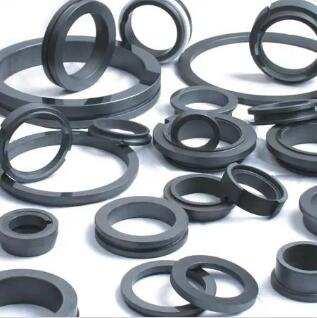Choosing the Right Silicon Carbide Mechanical Seal for Your Application
2024-09-04
Selecting the right silicon carbide (SiC) mechanical seal for your application is essential for ensuring optimal performance and longevity of your equipment. With various grades of silicon carbide and different design considerations, choosing the right seal can be a complex process. In this blog, we’ll guide you through the key factors to consider when selecting a SiC mechanical seal, helping you make the best choice for your specific needs.
1. Understanding the Different Grades of Silicon Carbide
Silicon carbide mechanical seals come in various grades, each with its unique properties tailored to specific applications. The two most common types are:
- Reaction-Bonded Silicon Carbide (RBSC): This grade of silicon carbide is known for its excellent thermal shock resistance and good mechanical properties. It is often used in applications where both wear resistance and toughness are required, such as in pumps handling abrasive fluids.
- Sintered Silicon Carbide (SSiC): Sintered SiC is a high-purity grade with superior hardness and wear resistance. It is chemically inert and highly resistant to thermal and chemical degradation, making it ideal for use in highly corrosive environments.
Choosing the right grade of silicon carbide depends on the specific requirements of your application, including the type of fluid being handled, operating temperatures, and pressure conditions.
2. Considering the Operating Environment
The operating environment plays a critical role in determining the appropriate silicon carbide mechanical seal. Key environmental factors to consider include:
- Temperature: Silicon carbide seals are designed to withstand high temperatures, but it’s important to choose a seal that matches the maximum operating temperature of your application. Sintered SiC is generally preferred for extreme temperature conditions.
- Pressure: The pressure conditions in which the seal will operate should also be considered. Higher pressures may require seals with enhanced structural integrity and tighter tolerances to prevent leakage.
- Chemical Compatibility: Consider the chemical composition of the fluids that the seal will come into contact with. SiC seals are highly resistant to chemicals, but specific environments may require a particular grade of silicon carbide or a specialized coating to ensure long-term performance.
3. Design Considerations for SiC Mechanical Seals
The design of the mechanical seal is just as important as the material. When selecting a SiC mechanical seal, consider the following design factors:
- Seal Face Design: The design of the seal face, including the surface finish and flatness, is crucial for ensuring effective sealing. A well-polished, flat surface minimizes friction and wear, extending the seal’s lifespan.
- Seal Type: There are various types of mechanical seals, including single and double seals, cartridge seals, and split seals. The choice of seal type depends on the specific application and the ease of installation and maintenance required.
- Secondary Seals: Silicon carbide mechanical seals often incorporate secondary seals, such as O-rings or gaskets, made from materials like rubber or elastomers. These secondary seals provide additional sealing protection and help accommodate thermal expansion and contraction.
4. Cost vs. Performance
While silicon carbide mechanical seals are known for their superior performance, they can be more expensive than seals made from other materials. It’s essential to balance the cost of the seal with the performance benefits it offers. In many cases, the long-term durability and reduced maintenance requirements of SiC seals justify the higher initial investment.
5. Working with a Trusted Supplier
Choosing the right silicon carbide mechanical seal also involves selecting a reputable supplier. Work with a supplier who can provide high-quality materials, expert guidance, and customization options to ensure that the seal meets your specific requirements. A trusted supplier can also offer technical support and after-sales service to help you get the most out of your SiC mechanical seals.
Conclusion
Selecting the right silicon carbide (SiC) mechanical seal involves considering the operating environment, understanding the different grades of SiC, and taking design factors into account. By carefully evaluating these factors, you can choose a seal that offers optimal performance, durability, and cost-effectiveness for your application. Working with a knowledgeable supplier can further enhance the selection process, ensuring that you get the right seal for your needs.



